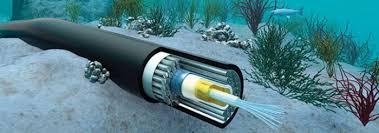- Related articles
- All Cisco ONS-SC+-10G-SR's information (List price, Specs, Datasheet PDF, Compatibility ma
- All Cisco CWDM-SFP-1590's information (List price, Specs, Datasheet PDF, Compatibility mat
- Optical Transceivers for Cisco SG550XG-24T-K9-UK Switch
- Optical Transceivers for Cisco SF250-48-K9-UK Switch
- All Cisco MA-SFP-10GB-LR's information (List price, Specs, Datasheet PDF, Compatibility ma
- All Cisco ONS-SI-155-I1's information (List price, Specs, Datasheet PDF, Compatibility mat
- Optical Transceivers for Cisco SG200-26FP-UK Switch
- What is CSFP transceiver?
- All Cisco ONS-XC-10G-S1's information (Overview, List price, Specs, Datasheet PDF)
- All Cisco GLC-TE's information (List price, Specs, Datasheet PDF, Compatibility matrix)

Definition of Undersea Fiber Optic Cable
Undersea Fiber Optic Cable is also called submarine or underwater fiber optic cable, it is the type of fiber optic cable that is laid on the seabed between two or more land-based stations so as to facilitate telecommunication signals in the sea. This type of fiber optic cable is mostly used by the submarine soldiers for the effective communication across the ocean. Consequently, Undersea Fiber Optic Cables are also used by submarines to carry digital data which may include the internet, telephone, or private data traffic. The very first Undersea Fiber Optic Cable was used in the year 1850s to carry telegraphy traffic. The Undersea Fiber Optic Cables that followed were meant to carry telephone traffic as well as data communication traffic. However, the current Undersea Fiber Optic Cables which uses optical fiber technology are meant to carry digital data, private data traffic, and the Internet.
What does the Undersea Fiber Optic Cable look like?
On the inside, they have a core made of layers of fiber and wires covered in a protective layer to keep the ocean out. The cables are several inches thick when they are near shore -- around the width of a soda can. At the deepest levels of the ocean, they are thinner, around the size of a quarter. That difference in size is because the cables actually face more threats in shallow waters, including everything from fishing ships to sharks.

How is Undersea Fiber Optic Cable laid?
The cables connect to "landing stations" along the seaboard. Massive cable-laying ships go on voyages to lay the fiber along the ocean floor —plowing across the sea floor to bury the cables. Naturally, their courses are plotted to run along flat seabed as much as possible, avoiding coral reefs and shipwrecks as well the deep trenches or undersea mountains.
Historically, undersea cables were paid for by telecom consortiums. But in recent years, tech companies like Google and Microsoft started getting in on the game, putting big bucks behind the infrastructure that's made the shift to an always connected world possible.
Conclusion
Undersea Fiber Optic Cables have changed lives of many people in our society today through the employment opportunities. There are thousands of men and women who have been employed to lay those fiber optic cables on a seabed. Consequently, the communication across the waters has been also improved and now our submarines are able to execute their roles efficiently. Generally, Undersea Fiber Optic Cables have impacted our society positively.





































































